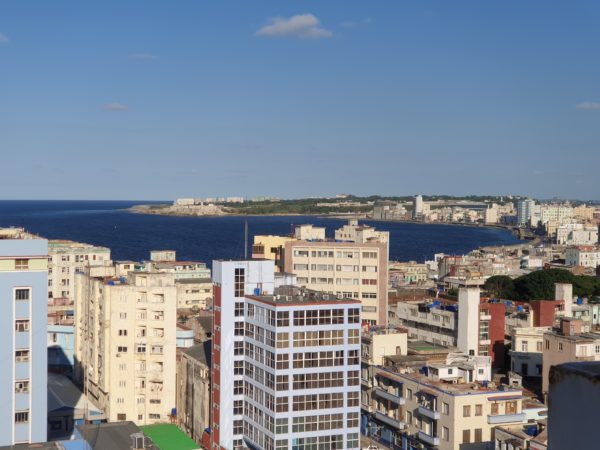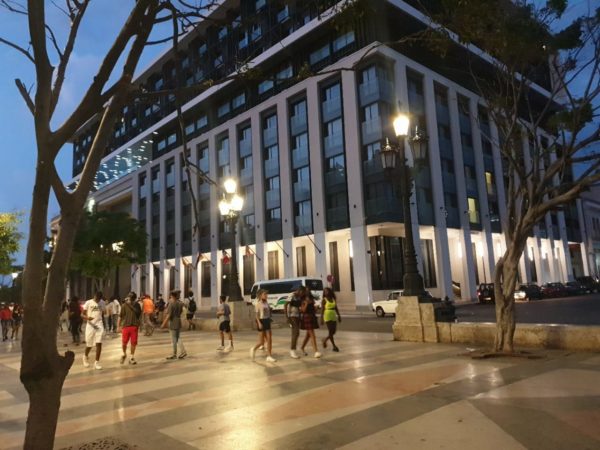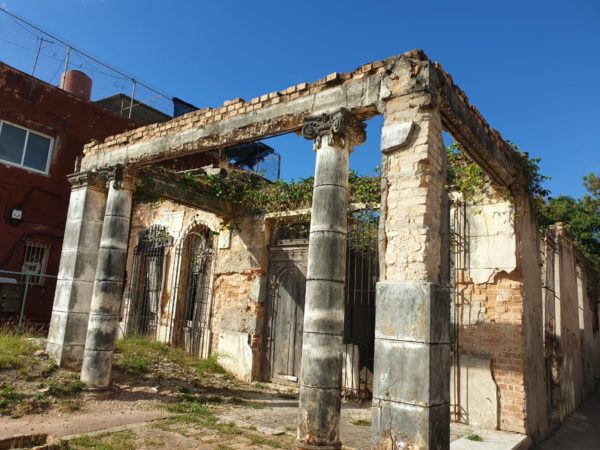Havana Hurts

By Lorenzo Martin Martinez
HAVANA TIMES – As I do almost every Sunday, I went out to forage for the week’s food. The Egido agro-market was nearly empty, and with sky-high prices, so there was nothing else for me to do but walk on to see what could be found at the market at Sol and Havana Streets.
I turned onto Sol Street. Just half a block down, I could see the remains of the building that had collapsed the Monday before, on October 17. It had been an old, three-floor tenement with around 80 rooms, where whole families lived crowded together. In Cuba, we call these solares.
I used to run through that building as a child, when I’d go to buy homemade popsicles, visit some friend who accompanied me on my adventures, or just because I felt like it. When I became an adult, I maintained some friendships in the building, and visited there from time to time. The increasing deterioration was clearly visible, day by day, without the tenants being able to do anything effective to avoid it.
As an adult, I also discovered that the tenement formed part of a sordid and painful Havana that tourists never see, or don’t want to see. Everything was bought and sold there: from small packets of coffee to marijuana, and also including sex and other “delicacies”. That solar was one of the thousands that Havana seethes with, born from the deterioration of the once-splendid buildings.
I’ve seldom asked myself about the fate of the residents when I pass by a crumbled building. They’re such a common sight along each street, that you end up normalizing it, and don’t ask yourself a lot of questions. Anyway, we already know the answer: they ended up at a community shelter where they’ll go on with their lives for some 20 years, before they’re finally allotted a more or less habitable place to live.

But in this case, I couldn’t stop wondering. Most of the former inhabitants had already been moved to a shelter. But that didn’t mean the building was emptier, since many needy families surreptitiously go into the abandoned locales and rooms and make a life in them, despite the degree of ruin.
This collapse left two women and a minor seriously injured, while a little girl lost her life. I wondered if I know any of the injured women. I wondered if the little girl who died was the daughter of some friend, or even a friend who had died. I wondered it if things would ever be different, so I’d never again hear about a building collapse in my beloved city, considered a Patrimony of Humanity.
With these ideas in my head, I reached the agro-market in that sector. Nearly on automatic pilot, I bought some food – a pair of garlic heads, a bundle of chives – because the onions’ price tag is enough to make you cry before you even peel them. I bought two pounds of mutton – quite expensive, to be sure, but necessary.
I returned home via Muralla St., so as not to pass that collapsed building again. I’ve never been one of those very susceptible types. Maybe it’s because I’m getting old, but this collapse in particular weighed as heavily on my heart as the tragedy that took place a few years ago, when a balcony collapsed on the corner of the Jesus Maria park in old Havana, killing two eleven-year-old girls.
Lost in these thoughts, I had reached my apartment building – also pretty deteriorated – when Finita startled me out of my soliloquy. Finita is an elderly woman of about 80 who lives on the second floor of my building. She has an energy that’s enviable and an impressive mental clarity. Her son had been among those killed when they sank the tugboat on March 13,1994. I never knew her husband, nor any other man in her life. She’s become something like the historic treasure of the building: always concerned for her neighbors, advising everyone what just arrived at the ration store, or who’s selling what and at what price.
“Is something wrong, honey?” Finita asks me, worried by the expression on my face.
“No, nothing, Finita, nothing,” I eventually respond.
“You have the face of someone who just got beat up!”
“Nothing, old girl, just that I went by the collapsed building on Sol St. and I began to wonder if I knew any of the people affected. I had friends there, well, most of them have left the country, but even so, it made a deep impression on me. A little girl was killed there, and three people were seriously injured. But it’s nothing, nothing, old girl. You get sentimental when you get old.”
When we got to my door, I invited her in: “Come in, keep me company. I’m going to make some coffee.
“Oh, honey! You can’t let yourself be swept away by sad thoughts, kiddo. Otherwise, I’d have been dead quite a while ago.”
“But it just sucks to see how everything around us is crumbling.”
“Ay, Son, this has all been crumbling ever since these sons of whores took power. I’ve seen hurricanes go by, but nothing like 1959, and to top it off, things then remained stationary.” She told me this, making harsh reference to the revolution that triumphed in 1959 and which persists, now converted into a dictatorial regime.
“Yeah, Finita, I know that. I’ve seen a lot of buildings fall, parks and avenues falling into ruins and no one cares.”
“If it were just the buildings that were falling, we’d be fine. But here, even shame has been lost,” she remarked brusquely.
“At least when Eusebio Leal [Cuban historian who directed the restoration projects of Old Havana] was alive, some parts of Old Havana were repaired, and I’d say less was falling down.”
“That was another shameless one, who let the buildings fall down with the people inside, all so they could later send them to a shelter and then build a hotel, or who knows what there, leaving the beautiful buildings for themselves.”
“Yes, but the hotel constructions haven’t stopped,” I reminded her while handing her the cup of coffee.

“Of course they haven’t stopped. That so-called GAESA [initials of a Cuban military-controlled umbrella enterprise] from the military owns it all. Look what beautiful hotels they’ve build on Prado St.. But also take a good look down the street less than half a block from the hotels, where the buildings are falling down, and the garbage tanks are spilling over. Honestly, I wonder what kind of tourist will find it pleasant being in a luxury hotel surrounded by misery.”

“You’re right, old girl. It’s tough.”
“Son, I came to this country with my parents as a very young girl, from a lost village in Galicia, Spain. Havana looked majestic to me, with its high buildings, its clean streets, thousands of automobiles. Of all that, only the memory remains and that memory hurts. My Havana hurts. The only city I know; the city that will be holding these bones when I go to my rest. Only, first, I’d like to see how they drag away this whole pack of hounds.”
I sipped the last swallow of coffee and was left thinking about what she said. It’s true. It hurts, my Havana hurts.







It’s not just Havana hurting, it’s a nationwide problem and virtually not much seems to be done about it.
I have great admiration for the Cuban people to be able to cope with the never-ending problems this Island has and still carry on with their lives, I could not do it.
Great article.
Thanks for this poignant article about the realities of life in Cuba. Some, like me, love Cuba and are always looking for the good and optimistic that when the US ends its embargo that things will get better. But this glimpse at realism makes me realize how immense the challenges are. Thanks for the wake up.
It makes me so sad …
… no words … no solution either
Keep going Cubans, keep going
What a painful article to read. During my last trip to Cuba, as I was walking along the Malecon, I saw building after building that had collapsed or seemed as if it was about to. I couldn’t help but wonder what comes next for Havana? Even if free and fair elections comes to Cuba, a capitalism brings money to rebuild, there is so much damage to the infrastructure that it is beyond my imagination that the City can ever recover. When an automobile is in an accident that causes serious damage to the car’s frame, the insurance company declares the vehicle to be a total loss. Not ‘repairable’. Or, even if it were repaired, it still wouldn’t be safe to drive. I fear that Havana is a total loss. Even if you were able to do the unimaginable and repair or rebuild buildings, streets, sewers, parks, and everything else that has crumbled over the years, like a totaled car, Havana will never be the same.